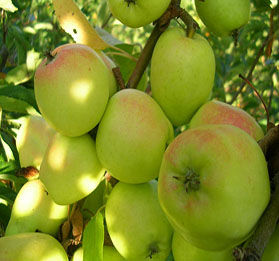
MOLISE
TERRITORY
AND HISTORY
Molise is a region of southern Italy, mostly mountainous and without plains. It is the second smallest region in Italy after the Valle d'Aosta. The entire mountainous part of Molise is part of the great Italian mountain range of the Apennines and in particular of the southern Apennines. The most important mountain ranges are the Meta Mountains to the north bordering Lazio and Abruzzo, the Matese (Samnite Apennines) to the south with the Campania border and the Marsican Mountains to the north with the Abruzzo border.
The small territory known today is the profit of the fusion of the Count of Molise and the County of Loritello (XIII century), but excluded however large areas now Molise; for a historical period it lost its administrative identity (XIX century), but not territorial and cultural, and was aggregated to Abruzzo (1816). In 1963 it was reconstituted as an administrative entity, after the abolition of the Abruzzi and Molise region, but with a territory very different from that of the past.
CUISINE
AND TRADITIONS
Green mountains and hills, plenty of water, a small but welcoming stretch of coast. Completing this portrait of Molise, there are small ancient villages whose streets are filled with inviting aromas. And from the olive groves and the cereal fields, two precious products for the local gastronomy arrive in the Molise kitchens: extra virgin olive oil and spelled. The latter is used to make bread, pasta, soups and desserts. Pork, as well as for the production of cured meats, is used for the sauce. Homemade pasta is a central element of Molise cuisine: the most common types are cavatelli and fusilli. The coast, of just over 30 km, also offers typical dishes, among which the succulent fish soups stand out.
In Molise, festivals feed and re-propose the culture of tradition. Some of them are to be considered unique. The "chariot race" between April and May in San Martino in Pensilis, Ururi and Portocannone, the Carrese si San Pardo at the end of May in Larino, the Mysteries of Corpus Domini in Campobasso, the Traglie of Jelsi on July 26 in day of Sant'Anna, the Rodeo Pentro of Montenero Valcocchiara in Ferragosto and, on Christmas Eve, "A Ndocciata" of Agnone which, last year, illuminated Piazza San Pietro with its fires.
From the point of view of viticulture, Molise is still in search of its own identity, being up to fifty years ago also linked administratively to Abruzzo. Today the Molise wines are placed at the turn of the Abruzzese and Pugliese ones, acting as a link between the enologies of the two regions. The autochthonous black berry vine Tintilia is the expression of the rebirth of Molise viticulture.
TYPICAL DISHES

Cavatelli
In Molise it is difficult to think of a Sunday lunch without cavatelli, possibly with the traditional pork ragù with which they are seasoned here. Despite the proven Molise origin of this ancient pasta format, cavatelli have spread throughout southern Italy, multiplying the gastronomic interpretations of this first course by the expert cooks and housewives of Basilicata, Puglia, Campania and Sicily.

Caciocavallo of Agnone
Agnone caciocavallo is a cheese made from cow's milk. Physically it has a large pear shape. The rind, on the other hand, is thin and hard with a hazelnut color, and can be covered with mold in the event of prolonged aging. Inside, the paste is compact with various cracks that release liquid. The aroma is intense while the taste is sweet and mellow if fresh and spicy when ripe.

Limoncella molisana
It is the typical apple to preserve for its extraordinary shelf life, known and appreciated only in terms of local markets, particularly in the province of Campobasso. At one time, if the warehouse was not enough, it was also kept in plain sight to adorn and perfume the kitchen and the living rooms.

Dicocco Spelled
Dicocco spelled, also called simply spelled, is one of the most historically rich products of Molise. The spelled plant is part of the grass family and is characterized by large, particularly strong and resistant spikes, which grow in hilly areas. Already cultivated by the Samnites, Etruscans and Romans, spelled is the oldest known cereal, and one of the first domestic crops practiced by man.

Treccia molisana
Typical dessert in the Easter period, it is prepared using lemon, fresh yeast, manitoba flour, butter, an average man and 20 grams of liqueur to taste. As for its other variants, both sweet and savory, the braid is so called by virtue of the shape similar to a braiding of hair.

Fusilli alla molisana
They were worked in the kitchens of the wealthier families, when they wanted to taste perfect fusilli, they summoned women specialized in this art and they admired the fast manual ability. still today they are made by hand, rolling the spaghetti to a wire and then drying them. In the local recipe they are accompanied with chopped onion, celery and carrot along with lamb and veal.

Lamb Heads
The lamb's head with potatoes is one of the typical dishes of Molise, usually cooked during the Easter holidays. This dish is prepared by firing on the stones of the fireplace, covered with the "coppa or coppo" (a typical concave iron cover that uses the heat of the fireplace) covered in turn by hot coals. The "coppo" came and is still used to cook potatoes, lamb and typical regional pizzas.
STARRY
RESTARAUNTS
There are no starred restaurants in this region.
